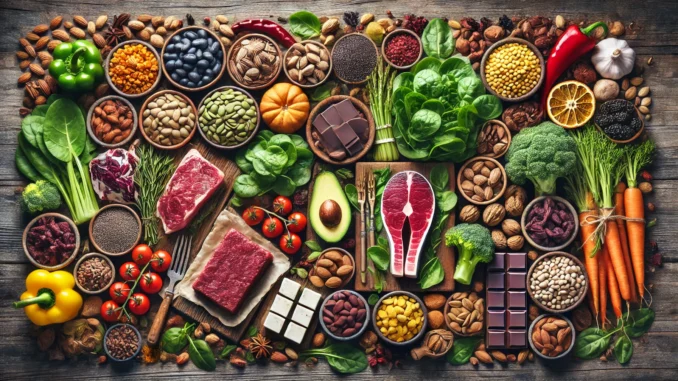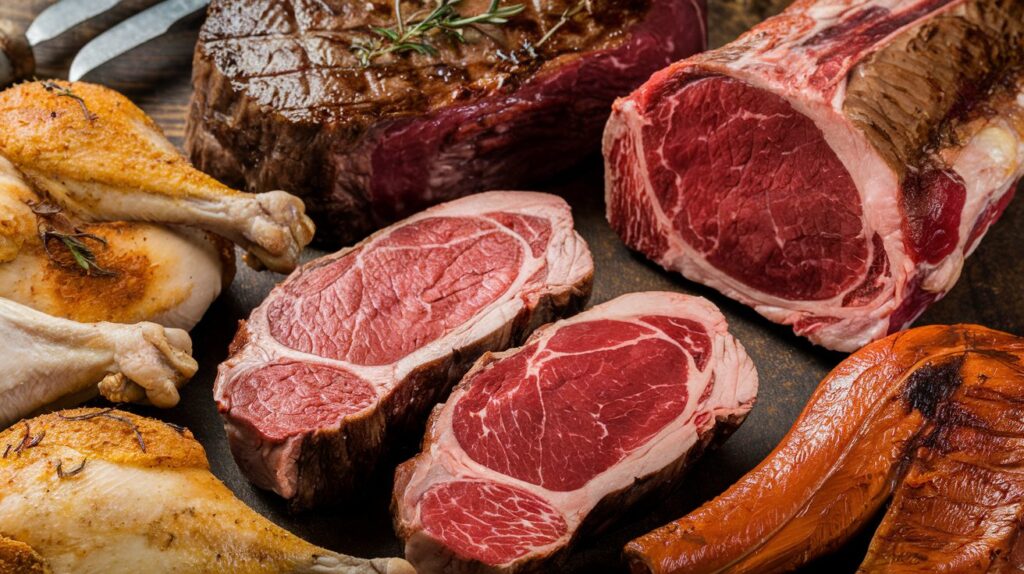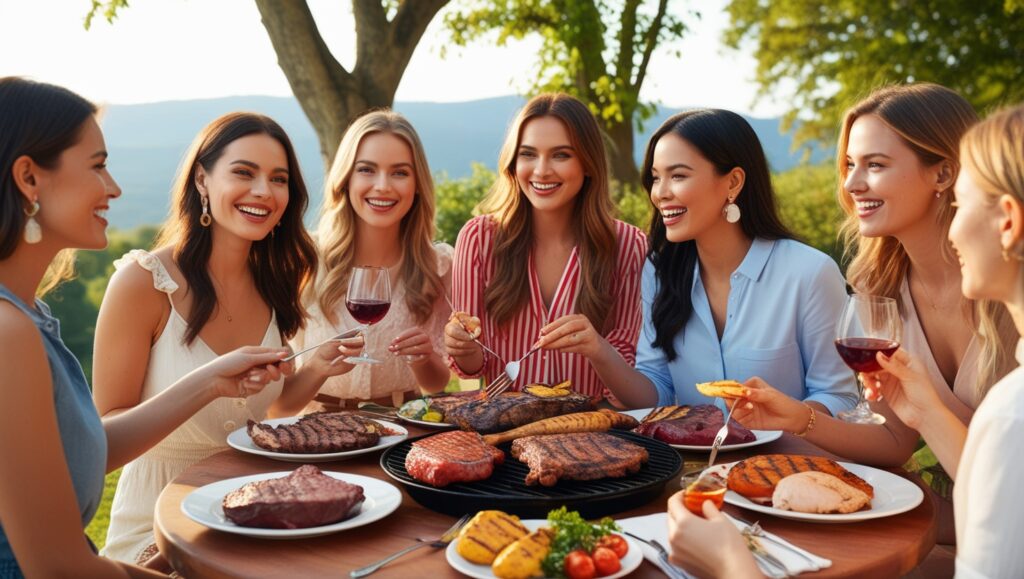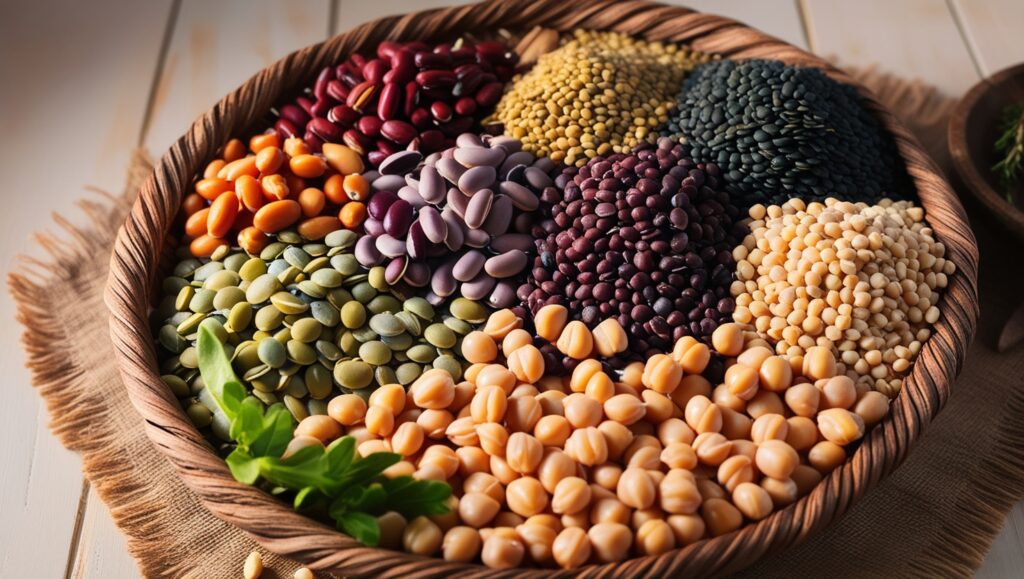
Iron-Rich Foods: Boosting Your Health and Energy Naturally
Why Is Iron Important?
Iron is essential for energy production, cognitive function, and immune system strength. The body needs iron to make hemoglobin, which transports oxygen to tissues. Low iron levels can lead to iron deficiency anemia, a condition where there aren’t enough red blood cells to supply the body’s oxygen needs. Common symptoms of iron deficiency include tiredness, dizziness, and pale skin. Consuming iron-rich foods is a natural way to prevent or manage these issues.
Iron is a crucial nutrient for overall health. Iron plays, a vital role in producing hemoglobin, a protein in red blood cells that carries oxygen throughout the body. Without adequate iron, our bodies can’t produce enough healthy red blood cells, leading to fatigue, weakened immunity, and other health problems. Understanding iron-rich foods and incorporating them into your diet is key to maintaining high energy levels and optimal well-being.
Understanding Different Types of Iron
There are two primary types of dietary iron: heme iron and non-heme iron.
- Heme Iron: Found in animal-based foods, heme iron is more easily absorbed by the body. Foods like meat, poultry, and fish are excellent sources of heme iron.
- Non-heme Iron: Found in plant-based foods, non-heme iron has a lower absorption rate, but you can enhance its absorption by pairing it with vitamin C-rich foods. Vegetables, nuts, beans, and fortified grains are good sources of non-heme iron.
Top Iron-Rich Foods to Include in Your Diet
Eating a balanced mix of heme, and non-heme iron-rich foods. Ensures you’re getting enough iron for a healthy body. Here’s a closer look at some of the best foods high in iron.
Red Meat: A Powerful Source of Heme Iron

Lean cuts of red meat, such as beef and lamb, are some of the best sources of heme iron. They provide a high concentration of easily absorbed iron, making them a great choice for individuals with low iron levels.
- How Much to Consume: Include red meat in your diet 2-3 times a week, opting for leaner cuts to reduce fat intake.
- Cooking Tip: Grill or roast meat instead of frying to keep it healthy.

Poultry and Fish: Lean and Nutritious Options
Chicken, turkey, and fish provide moderate amounts of heme iron, especially darker meat from chicken and turkey legs. Oily fish like salmon and tuna are also good sources.
- Best Choices: Chicken liver, turkey, and fatty fish like sardines and mackerel.
- Health Tip: Opt for organic or free-range poultry for a healthier option.
Dark Leafy Greens: A Vegan-Friendly Iron Source
Spinach, kale, and Swiss chard are rich in non-heme iron. Although plant-based iron isn’t absorbed as efficiently, these vegetables pack a nutritional punch and offer fiber, antioxidants, and other essential vitamins.
- Iron Content: One cup of cooked spinach provides about 6 mg of iron.
- Absorption Tip: Pair leafy greens with a vitamin C-rich food like bell peppers or citrus fruits to boost iron absorption.
Legumes: Beans, Lentils, and Chickpeas
Legumes are a fantastic source of non-heme iron, protein, and fiber, making them ideal for vegetarians and vegans. Lentils, chickpeas, and black beans are among the top choices for an iron-rich diet.
- Serving Ideas: Add lentils to soups or salads and make hummus from chickpeas for a healthy snack.
- Boost Absorption: Squeeze some lemon juice on bean dishes to enhance iron uptake.

Nuts and Seeds: Compact Powerhouses of Iron
Almonds, cashews, pumpkin seeds, and sunflower seeds are small but mighty sources of iron. They make great snacks or can be added to meals for an extra nutrient boost.
- Quick Snack: Keep a handful of mixed nuts handy for a midday iron-rich snack.
- Serving Tip: Use nut butter on whole-grain toast for a nutrient-packed breakfast.
Tofu and Tempeh: Plant-Based Iron for Vegans
Tofu and tempeh are excellent vegan sources of iron and protein. These soy-based foods are versatile and can be added to a variety of dishes, from stir-fries to salads.
- Cooking Tip: Marinate tofu for better flavor absorption and bake or stir-fry it for a tasty iron-rich meal.
- Nutritional Bonus: Tofu is also rich in calcium, another important mineral.
Fortified Cereals and Whole Grains
Many breakfast cereals and whole grains like oats, quinoa, and brown rice are fortified with iron, making them easy sources of this nutrient. Look for cereals with 100% of the daily value for iron per serving.
- Breakfast Idea: Start your day with an iron-fortified cereal and a glass of orange juice to enhance iron absorption.
- Whole Grains: Swap refined grains for whole grains to boost your fiber and nutrient intake.
Dried Fruits: Sweet and Nutritious Snacks
Dried fruits like raisins, apricots, and prunes are convenient sources of non-heme iron. They can be enjoyed on their own or added to oatmeal, salads, or baked goods. Learn more…
- Snack Tip: Mix dried fruits with nuts for a balanced, iron-rich trail mix.
- Portion Control: While dried fruits are nutritious, they are calorie-dense, so consume them in moderation.
Iron Supplements: When Foods Aren’t Enough
Sometimes diet alone isn’t enough to meet your iron needs, especially if you have increased requirements due to pregnancy, heavy menstruation, or an existing deficiency. In such cases, iron supplements may be necessary, but they should be taken under medical supervision to avoid potential side effects like constipation or nausea.
Tips to Maximize Iron Absorption
- Combine Iron Sources with Vitamin C: Eating foods high in vitamin C (like oranges, strawberries, and tomatoes) along with iron-rich foods increases absorption.
- Avoid Iron Inhibitors: Some foods and beverages, like coffee, tea, and dairy, can inhibit iron absorption. Avoid consuming them during iron-rich meals.
- Cook in Cast Iron Pans: Using cast iron cookware can add trace amounts of iron to your food, especially when cooking acidic foods like tomatoes.
FAQs
What foods are highest in iron?
The highest sources of iron include red meat, poultry, seafood, and organ meats like liver. For plant-based sources, look to lentils, spinach, nuts, seeds, and fortified cereals.
Yes, a vegetarian diet can provide sufficient iron if it includes a variety of iron-rich foods like legumes, nuts, seeds, and dark leafy greens. Pairing these with vitamin C-rich foods can further enhance absorption.
How much iron do I need daily?
The recommended daily intake varies: adult men need about 8 mg, while women (especially of childbearing age) need around 18 mg. Pregnant women may require more, around 27 mg per day.
What are the symptoms of low iron?
Common symptoms of iron deficiency include fatigue, weakness, pale skin, dizziness, headaches, and shortness of breath. Severe deficiency can lead to iron deficiency anemia.
Is it possible to consume too much iron?
Yes, excessive iron intake can cause health problems, including constipation, nausea, and even damage to organs like the liver. Always consult a healthcare provider before taking supplements.
What should I avoid when eating iron-rich foods?
Avoid consuming tea, coffee, or calcium-rich foods like dairy during iron-rich meals, as they can hinder iron absorption. It’s best to enjoy them at separate times.
Conclusion
Incorporating a variety of iron-rich foods into your diet is essential for maintaining high energy levels and overall health. From lean meats and fish to leafy greens and legumes, there’s a wealth of options to suit any diet, whether you’re an omnivore, vegetarian, or vegan. Remember, pairing iron sources with vitamin C can maximize absorption, and if you’re ever unsure, consulting with a healthcare professional can help you tailor a diet plan that meets your specific needs.

Leave a Reply